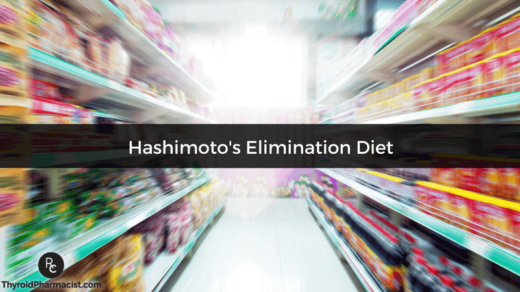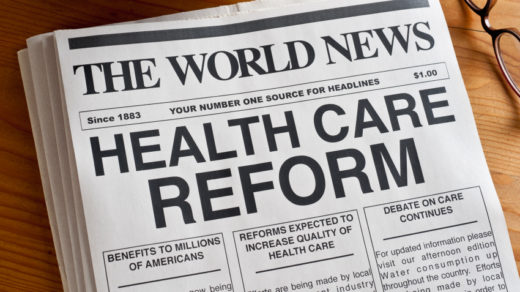
Blogger Cathy Hung, D.D.S., is an oral and maxillofacial surgeon practicing in New Jersey. She is an alumna of the ADA Institute for Diversity in Leadership and a wellness ambassador with the ADA Wellness Ambassador Program, which is supported by the ADA Dental Team Wellness Advisory Committee of the ADA Council on Dental Practice. She is a speaker, writer and life coach on diversity, equity and inclusion and female leadership. She was the recipient of the 10th annual Lucy Hobbs Project Awards’ Humanitarian Award.
Sheela Raja, Ph.D., is a clinical psychologist and associate professor at the University of Illinois at Chicago. She is currently the director of the UIC Resilience Center, helping students to improve behavioral health in their personal and professional lives. Dr. Raja specializes in post-traumatic stress disorder and trauma, and her research and training focus is in the area of trauma-informed health care. Dr. Raja is the author of the books “The Resilient Teen”1 and “Overcoming Trauma and PTSD”2, and she did a two-part webinar for the American Dental Association on how to develop emotional resilience.3,4 In this fireside chats session, I interviewed Dr. Raja to gain insight on how trauma affects us and how we can develop resilience skills for our wellness.

Dr. Raja
Trauma-informed health care5
Q: Dr. Raja, could you talk about how you got involved with teaching about mental health in a dental school leading to the development of the resilience center at UIC?
A: I am a clinical psychologist. I was hired in the College of Dentistry 15 years ago to teach behavioral science concepts, ranging from dealing with anxious patients, breaking bad news, dealing with adverse events, working with people with eating disorders and trauma histories. Over the years, my research specialty has become trauma-informed health care, meaning when people are traumatized or chronically stressed, how can we help them to engage in care and not re-traumatize them? Part of good trauma-informed care is self-care. You can’t take care of other people unless you are feeling well and taking care of yourself. After the pandemic started, I tried to do something more targeted for our students; it fit into my expertise and training and the students said they wanted more resources. Provider resilience fits into the umbrella of trauma-informed health care so that we can better serve our patients because that’s our end users.
Toxic stress and aggressions
Q: Dr. Raja, you mentioned in your resilience webinars that minority groups experienced a higher rate of burnout, according to statistics from the American Medical Association. Why do you think that is the case?
A: We have a lot of data now about how toxic stress — for example, ongoing racism, ongoing sexism, homophobia and transphobia — is damaging. In my field, people have started to move away from the term “microaggressions” because they are just “aggressions.” They take a toll on us, not only in terms of our mental health but also physiological health. When COVID happened, it hit vulnerable populations first. Vulnerable populations are often the ones that are the most underserved and the most discriminated against. Vulnerable populations tend to be minority groups in our country. When COVID began, many minority groups felt, “My plate was already full, and now I have to deal with this additional stress.” Some others might not have felt as touched by the daily stressors of COVID, especially in the first couple of months, but our minority populations definitely felt vulnerable in multiple ways. You don’t just shake it off. The implicit and explicit bias and racism increase your heart rate and activate the hypothalamic-pituitary-adrenal axis, and when that happens chronically, it affects our physical health as well as our mental health.
Guilt and shame
Q: When you experience aggressions as you mentioned before, oftentimes you also experience negative feelings. In your books and webinars, you discuss guilt and shame and how they are different. Could you elaborate on that?
A: Shame is about who we are: when we look back and say, “Look at me. I made all the bad decisions, and I am not a good person.” In my book “The Resilient Teens,” I mentioned that shame can also be the result of prejudice or stigma. It is not because you have done something wrong. Guilt, on the other hand, has more to do with a situation. I look back, and maybe I would have done things differently. I learned from the situation. Shame has to do with how you judge yourself as a person and guilt has to do with how you handled a situation. Guilt helps us learn; shame keeps us stuck. We should note that sometimes we can learn from a situation and grow from it, but if you are experiencing bigotry or prejudice, then clearly resilience involves society needing to change, not just the individual and their perceptions of the situation.
Numbing behavior
Q: When we get home at the end of the day, we might pour ourselves a glass of wine to unwind when we feel stressed. You mentioned in your webinars that this is considered “numbing behavior.” I think a lot of times this type of coping behavior with stress is subconscious: We don’t realize this is numbing behavior. How do we avoid what is mostly subconscious?
A: There are a lot of different skills. In my book, I talked a little about expanding your emotional vocabulary. For example, if you are somebody who tends to stuff your emotions a little bit, you might want to keep a list of emotional words on your phone to expand your repertoire of how to identify and label your feelings. All the words for happy, all the words for excited, for example. Set a timer on your phone, say, three times a day. Check in with yourself to identify what you are feeling. Another way is called self-monitoring, which is a fancy way of saying to write things down on a structured basis. For example, if you tend to have a glass of wine a few times a week, write down the time of the day, how much you are drinking and maybe what emotion you are feeling. You will discover something about yourself — for example, it is really when I am tired that I am drinking a lot, not when I am upset or depressed. This is the first step towards breaking out of numbing behavior.
Breaking habits
Q: In your experience, do you agree when people say that it takes 21 days to break a habit?
A: The bad news is that the 21 days tend to be for simpler goals. For more complex goals like cutting back on drinking, those tend to take two or three months to really feel like they are routine. The other thing is that it is OK to give yourself time to create a new habit because this is a natural part of change. Some days are good, and some days are not as great. This is the difference between guilt and shame. You cannot look at the curve as a straight line. There are some days with little slip backs, but you look at the overall trend, take pride in your successes and learn from mistakes.
Resilience versus stoicism
Q: What is resilience, and how do you feel about stoicism? You mentioned in your webinars that stoicism is not resilience and that stoicism is different from strength. Could you elaborate on that?
A: In my book, I define resilience as a set of skills that help you develop a healthy mind and body, techniques that help you develop strong and healthy emotional connections and a sense of purpose, and a set of practices that help you cope in healthy ways during times of stress. Resilience isn’t all scented candles and yoga. From a psychological standpoint, resilience is more about: Are you able to get up and do what you need to do to function after something very difficult or challenging? Stoicism, on the other hand, feeds into emotional avoidance. I joked that if anybody had the sign “Keep Calm and Carry On,” I might come in and rip it up. We can’t really grow and reflect and change with stoicism as individuals, institutions or culture if we just keep marching forward without learning from the past and tapping into our emotional reactions. There is a lot of strength in emotional vulnerability. By being able to say, “I am sad, I am devastated, I am anxious, I am worried,” we can then figure out how to best solve problems in innovative ways. If we do not name it, it becomes avoidance. Unfortunately, I think we reward stoicism, especially in health care culture, and it is detrimental to mental health.
Post-traumatic growth
Q: You talked about post-traumatic growth in your seminars and books. Could you explain what this term means?
A: Post-traumatic growth is when we have been through something really difficult, and we look back and integrate it into our story and can identify how we have grown. This doesn’t mean, “I want this to happen to me again.” For example, nobody would invite COVID into our world again, but given what happened in the last three years, perhaps I had the opportunity to start my own business or get more involved with my kids in school. This stressor has helped me grow and change and challenged me in some ways. Post-traumatic growth is closely related to resilience. Resilience is finding ways to survive and adapt under stress, while post-traumatic growth is a way to find meaning in what we have experienced.
Social support
Q: How can we help ourselves through difficult times in order to become more resilient?
A: Resilient people know when to ask for help, and there are different types of social support. For example, you need at least one or two people in your life you can talk to if you need them to just listen, and this is emotional support. There are other types of support that are undervalued in my opinion. For example, if you are sick and someone else is filling in for you, that is instrumental support. There is also informational support: people who are good resources on how to run a practice or how to get a loan, for example. Finally, sometimes, there are people who are just fun to be with, and this is called companionship support. I encourage people to do a social support audit. Look back on your life every year and say, “Where am I at with those types of support?”
Building resilience on a systemic level to prevent burnout
Q: Dr. Raja, would you tell us more about the Resilience Center at UIC? You mentioned that there are student ambassadors who help others to build resilience. What is the ambassador’s involvement?
A: The pandemic exacerbated what is already happening with the mental health crisis. Compared with 15 years ago, my students now are more open and vocal about destigmatizing mental health, which is in line with national statistics on the younger generation. There is so much more of an awareness of mental health and how it goes along with physical health and wellness. What I did was ask for volunteer students for our ambassador program and educated them on the student services available on campus, such as how to report racial discrimination, sexual harassment, domestic violence and so forth. The student ambassadors serve as resources for other students and come up with their own programming that they think their cohorts would be interested in. For example, one of the ambassadors was into fitness, so she organized a fun field day for new students, providing snacks and playing games and sports as a way to build the student community back after the pandemic. I enjoy the different ideas they bring to the table and how they make it relevant clinically and developmentally. Resilience has to be supported on a systemic level. If you can build some self-efficacy into people’s jobs, respect choices and make some ways of taking breaks and sick time, those things matter in a big way because people who are the most susceptible to burnout are the ones with the lowest level of power: the younger generations and people from historically marginalized groups.
Wellness and DEI (diversity, equity and inclusion)
Dr. Raja finally stressed, “Mental health and wellness in our health care workforce cannot happen without diversity, equity and inclusion. I have come to deeply appreciate all the struggles we have had, as we have grown to develop a center where mental health and wellness go hand in hand with DEI efforts.”
References
- Raja, S. (2021). The Resilient Teen: 10 Key Skills to Bounce Back from Setbacks and Turn Stress Into Success. New Harbinger Publications.
- Raja, S. (2012). Overcoming Trauma and PTSD: A Workbook Integrating Skills from ACT, DBT, and CBT. New Harbinger Publications.
- American Dental Association. Raja, S. (2022, April 19). How can dentists develop emotional resilience in the world full of stress? Retrieved Jan. 14, 2023, from https://ebusiness.ada.org/education/viewcourse.aspx?id=670.
- American Dental Association. Raja, S. (2022, May 18). Developing your own emotional resilience/wellness plan. Retrieved Jan. 14, 2023, from https://ebusiness.ada.org/education/viewcourse.aspx?id=674.
- Purkey, E. (2018, March). Trauma-informed care. Canadian family Physician, 64, 170-172.


